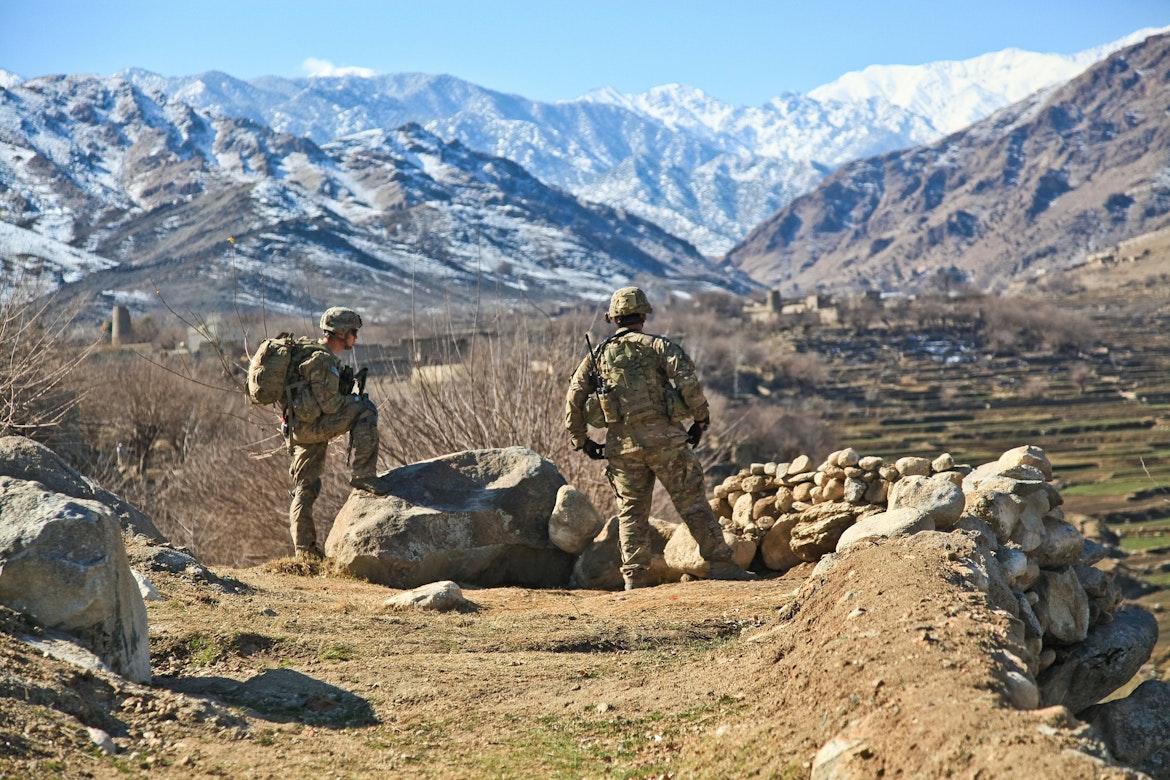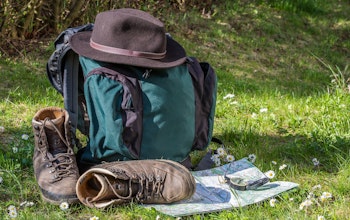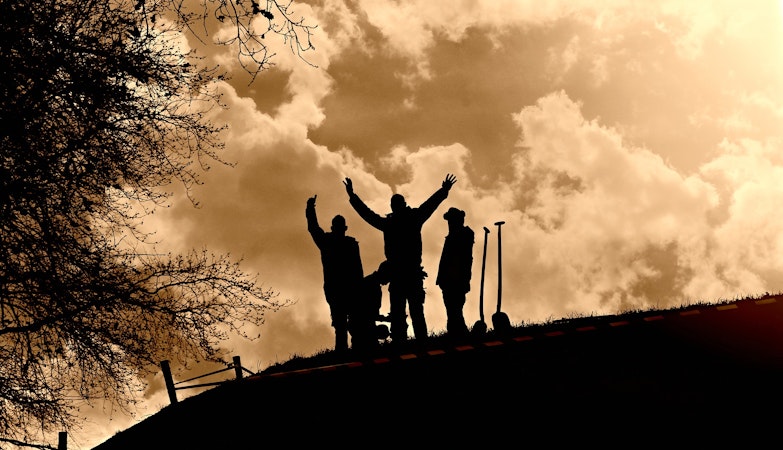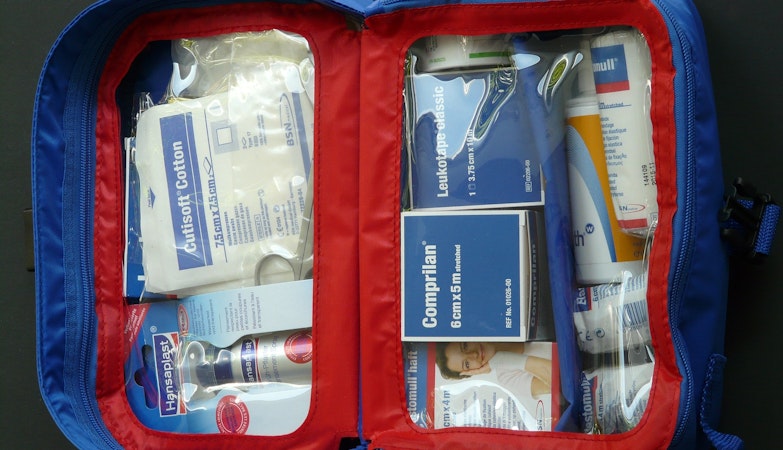What kinds of military-style training and tactics would be of value in survival situations?
While a survivalist is not a soldier and a survival group is not a military or paramilitary unit, there are several tactical skills and capabilities that survivalists need to learn and practice. In today’s world, civilians are often the main target of terrorists, gangs, and even foreign or domestic paramilitary forces. Any large-scale collapse and civil disorder would result in situations where combat capabilities and military tactics would be essential to survival. It is important to understand that for military organizations the objective such as a hill, building or town takes priority over personal or group survival, but for a survival family or group, survival is the primary objective. In most cases the tactics are used defensively or to facilitate safety and security. Exceptions where aggressive tactics might be applied would be for rescue situations.
The individual survivalist that has not served in the military will have more difficulty dealing with combat situations. Most military tactics assume that the participants are healthy, relatively young and well trained. Most survivalist and families will have mixed capabilities and cannot afford any casualties. For these reasons, survivalists should avoid military-like combat situations whenever possible. However, when plunged into a life-or-death scenario, any level of training and tactical capability will infer a great advantage. Most assaults, ambushes and raids will be initiated by untrained gangs and groups that will be dealt with effectively by the application of basic military movements and tactics. Even if you are assaulted by some kind of organized paramilitary group, your knowledge and training will infer a greater chance for survival and escape. While it is not practical to fully explain all of the necessary techniques and tactics in a few pages, here are the basic principles. The survivalist should study military texts and take advantage of any opportunities to experience practical training.
Weapons Use Skills
Tactical usage of firearms goes well beyond the basic self-defense use of a handgun necessary for normal civilian crime resistance applications. The survivalist that anticipates a potential military-like combat situation must become proficient in the use of high capacity tactical rifles. Most current tactical rifles are based on either the US Military AR-15 or Russian Kalashnikov AK-47 designs. These are the so called “assault rifles”, but are highly effective in self-defense and survival as well as hunting for game. The AR-15s and similar designs are reliable and accurate, but require more care than AK’s. AK-47s are not as accurate as the AR-15s, but are extremely reliable and can function without maintenance and cleaning for extended periods. The AR15s use 5.56mm ammunition that is plentiful and should be the most available even during survival conditions. The AK-47s uses 7.62 mm Russian ammunition that is available during normal times, but might become scarce in the future. In any case, the survivalist should have no less than two thousand rounds of ammunition and six spare thirty-round magazines on hand along with spare parts and cleaning kits. If you can anticipate combat in urban areas or within buildings the shorter, carbine versions or folding stock versions may be worth consideration. Reflex sights might also be a useful addition. Although combat rifles have an effective range of 400 meters or more, the defensive use will probably be at much closer ranges. The survivalist should be proficient at hitting man-sized targets at about 100 yards before developing longer range capabilities. If possible, fire at least 200 rounds from your primary survival rifle quarterly are more often if practical. Then practice disassembly and cleaning. You should also practice rapid magazine changes, firing from kneeling, standing and prone positions and from behind cover. These options are usually available at combat ranges and training facilities.
All survivalists should understand the difference between cover and concealment. Concealment simply means that you are in a place where the enemy cannot see you. This may prevent your being shot at or at least reduce your chances of being hit, but it will not stop a bullet if the enemy does decide to fire in that direction. Cover is a truly bullet proof or at least bullet resistant location such as the engine bock of a vehicle, a brick wall, a large tree or a trench. Armor-piercing rifle ammunition can penetrate auto bodies, several inches of hardwood, cement blocks and appliances. Cover only lasts until the enemy maneuvers around it, so it is a temporary refuge to buy time for escape or counter action.
Route selection while on the move is a critical military skill. Under hostile conditions, you cannot just walk down the road and expect to survive. The obvious and easy path is usually going to lead you to destruction. Use your binoculars to view your route in advance. Consider where you might be ambushed or trapped. If you cannot avoid these places have a plan to scout them and clear them rather than just walk into them. The routes for daytime movement and nighttime movement are usually different. In the daytime you do not want to be out in the open or silhouetted for an enemy hiding in the woods or rocks. You will want to stick to those areas where you are best concealed and can find cover immediately. At night stumbling through heavy foliage and rough terrain may be more risky than using flat terrain, but you must avoid being silhouetted. Stay low. Use low ground and stay quiet. Moving down gravel roads is particularly risky at night. The white gravel silhouettes anyone on the road and the crunch of feet is easily heard. Avoid moving on any kind of road. Stick to the shoulders where movement is better concealed and cover is closer at hand.
A survivalist should be able to move safely under fire or where the potential for being shot at exists. Shuffling along, marching or casual walking are not good enough under threat conditions. Here are some methods that a wise survivalist should practice.
Movement under combat conditions is always risky. The advantage always lies with the potential ambusher or sniper. If possible avoid moving through any potentially hostile area. Stay put or take a longer and safer route if possible. If you must move about do so in combat a ready condition.
Whether you are moving in daylight or at night, strict noise discipline is essential. Talking in normal tones is prohibited and whispering is only used for essential communications. Everyone’s gear must be secured so it does not squeak, rattle or clang. Have everyone jump up and down before starting out to detect and secure any noise sources. Any shiny or glowing objects should also be covered. If extreme stealth is needed rags or old heavy socks can be placed over shoes. Of course only muted or camouflage colors can be worn. This includes shoes and socks. White flashlights are absolutely never used at night. Red lensed flashlights, preferably covered under ponchos or coats can be used to consult maps if absolutely necessary. Needless to say, cellphones are strictly prohibited.
Bunching up or lack of attention is an invitation to assault. Even if there are just two or three people, they must maintain a distance from each other and a staggered formation so that they cannot be taken or shot all together. The distance depends on the terrain and the visibility. Each member should maintain a distance of at least four to six feet from others in all directions. This distance can be a bit further in open terrain, but may need to be closer on dark nights. Members should always be in position to support and protect each other in a staged formation that permits firing in multiple directions without endangering fellow members.
One person on the move must stop, squat and slowly turn around and listen every few minutes. A group must have clearly assigned directions of responsibility such as front and right flank, left flank and rear, etc., to assure 360 degree coverage. Larger groups will send out a point man and have a designated rear guard. A flank security person or team may be needed in some kinds of terrain. The point man’s task is extremely fatiguing as it requires constant vigilance in all direction and even for trip wires. This task should be rotated frequently. Normally the point man should be just in view of the lead person in the group. The rearguard usually is closer to the group, but must stop periodically and turn around to watch for enemies. The people at the rear of the group should always be checking to be sure he is still there and safe. In a single file column every other person keep guard on the opposite side with the front person watching ahead and the rear person regularly checking behind. In a double column the right row covers the right and the left row covers the left side. Frequent rest stops are necessary, but are not a time for conversation or bunching up. Select a well concealed spot off of roads and paths. Put out 360 degree security. If a small group stops then they should all face outward not inward while resting.
Crossing Lanes
Crossing roads, railroad tracks and other open lanes is particularly hazardous under hostile conditions. Anyone looking down that lane has a clear field of vision and fire. Cross at a narrow point or a sharp bend where your action is least visible. There are two schools of thought about crossing. You can send one scout across to secure the opposite side and see if they are shot at. This may only alert the enemy that more are coming. The other tactic is to all rush across at once before the enemy can react. Both methods have advantages and risks. You do not want to wander across or loiter. If you know the crossing will be opposed and cannot find another route you can use fire and maneuver by have half the group fire to pin down the enemy while the other crosses and then fires to cover the second group’s crossing; this is something a survival group should practice. If you have smoke bombs, these can be of great help in such crossings.
Diversion and Misdirection
Diversions and misdirection is a key military skill. Smoke or fireworks can be used to draw attention away from you while you escape or maneuver. A false campsite can attract looters and raiders while your real site remains hidden. Dummy defenses and bunkers can draw fire away from your true location. False trails can be laid away from your true route.
Counter Ambush Techniques
The ambush is the most deadly situation a group can find itself in. The best way to avoid being a victim is to avoid movement, especially a night. The advantage always lies with the ambusher who chooses the place and time and remains hidden.
Since it is most likely that the survivalist will not be encountering well trained and heavily equipped ambushers that would be using automatic weapons and mines, basic ambush avoidance and counter ambush methods should be effective.
An ambush may simply be a group of shooters hiding along the side of the road or in buildings where they have good concealment. A more sophisticated ambush would involve a roadblock or debris to stop the group in the kill zone. Sharp turns in a road or path can permit ambushers to fire down the length of you group as well as from a flank. These are the locations that a survivalist on the move must be especially aware of. The point man should be constantly alert for signs of activity, noises, shadows, etc. and signal the group to halt if anything looks or feels suspicious. Since the group may already be in or near a kill zone it may need to back out and consider ways to avoid or eliminate the threat. There are several counter ambush tactics that are effective depending on the situation. The survival group should be well trained in each counter ambush drill
If the group has not entered the kill zone, the best action is to back out while maintaining good order and fire if necessary. You can then opt to go around the ambush or flank them and flush them out of the position.
If the group is well into a kill zone and under fire you may be able to fire on the ambushing location while quickly running out of the danger zone or crawling to safety.
If quick escape is not an option then your only other choice it to charge the ambush site with all the firepower you can bring to bear in hope of overrunning or dispersing the ambushers.
The one thing you do not want to do is remain in the kill zone and engage in a fire fight. The leader must call the counter ambush and the team must execute it immediately. Regardless of training, being caught in an ambush almost always results in casualties. If the ambushers turnout to be well trained and/or numerically superior you may expect very serious losses.
When any kind of counter ambush drill is executed your group is going to get dispersed. This is particularly true in heavy forests and/or at night. Having pre-established rally points and passwords will be critical in reestablishing the group and avoiding losses.
Basic Military Maneuvers
Fire and maneuver is the most basic military drill and should be understood by any group that anticipates a combat situation. The British call this tactic “bounding over watch”. Simply put, one person or team shoots at the enemy while the other moves to a better position. In an offensive situation the fire team pins the enemy with fire while the maneuver team moves closer. Then, they change tasks so that the maneuver team becomes the fire team while the fires team maneuvers even closer until the objective is taken or flanked. In withdrawal the same alternating persons or teams execute the maneuver until they are out of range or into a safe position. While fire and maneuver can be used to facilitate a straight in assault or straight out withdrawal, flanking to the right or left should always be preferred if possible. Frontal assault or a running retreat is generally costly and often disastrous. Survivalists that truly anticipate combat situation should be trained in execution of fire and maneuver.
Once a group (even just two) comes under fire they must be ready to implement a fire and maneuver engagement either moving forward or to extricate themselves
The original maneuver team (or person) has now become the fire team as the other team closes in on the objective here. If the “objective” is not critical or the defending force is strong, the fire and maneuver should be retrograde.
Field fortifications are a necessary skill for survival. Failure to dig in has doomed many complacent units in the past. Trenches, foxholes and improvised bunkers provide the defender with a great advantage against even a superior force. When time is short or the ground is hard (rocky or frozen) scraping even a shallow, low spot with some dirt, rocks and debris in front is far better than lying in the open. A pile of dirt in front of a trench or foxhole may give away your location so try to camouflage them with leaves and debris. In general foxholes should hold no more than two people, but be close enough to others for mutual support. Trenches should zigzag or curve. While barbed wire may not be available, interlaced tree limbs and sharpened stakes can be used to slow down assaulters.
Fortifications of any kind should be located so there is a clear field of view and fire in front of them. Rocks, low ground or close trees and brush would permit an enemy to get close without risk. Clear tall grass shrubs and other obstruction out to at least fifty yards. Even plain wire can be strung to trip and slow approach. Empty cans with stones inside can be attached to these obstacles to make noise at night. Below are a few simple types of field fortifications that could be used to protect a survival camp or other position. A day practicing digging and using these kinds of fortifications would be time well spent.
A simple foxhole. This can be enlarged to hold several defenders. Note that it is designed for 360 degree, all around defense
A more advanced field bunker with an earthen roof and camouflage. This would be practical for an observation post or camp defensive position if the location is to be held for an extended period.
Urban combat is to be avoided whenever possible. The cost and risk of this kind of combat far exceeds the value. Extensive training is necessary to have any level of proficiency and even the best military units take heavy losses in urban environments. For a survivalist, home defense and/or a fighting escape are the only urban combat necessities. The same principles of stealth, camouflage, diversion, fire and maneuver and counter ambush apply, but are all more complicated. Multistory buildings add a third dimension to threats. Hiding places are everywhere for you and for the potential enemy. Route selection must take into account how you are exposed, where you can use concealment, where you can find cover and where threats may lurk. Open streets are almost always the worst routes. Moving house to house, yard to yard or ally to ally is much slower but often safer.
Defending your home against a few unorganized criminals is achievable with good weapons skills and constant vigilance, but defense against organized assault will be extremely difficult. The military would simply flatten the adjoining houses, and cut down the trees to clear field of fire for automatic weapons. You do not have these options. Adjoining houses may be occupied by shooters or set on fire to drive you out. Walls and fences will provide cover and concealment for shooters to get closer. While older, brick homes are basically bulletproof, frame houses and brick veneer homes can be riddled by rifle fire. Once a group of more than two or three has decided to besiege your home, you are in serious trouble unless you have organized a block or community defense team. You should have evacuated already or have an escape plan to execute before you are trapped. There is one other option. Instead of waiting for the miscreants to get to your home, you can go out and help your neighbors by ambushing or outflanking the shooters before they get to you. A calculated risk.
Physical Security
A single survivalist cannot remain at full alertness for twenty-four hours a day. The entire family or group must be capable of sentry duty at home or in a camp. Ideally, sentries should be on duty just one or two hours, but no more than four hours per shift and in twos if possible. They may be assigned to just lookout from fixed positions or walk a perimeter or both. If a perimeter patrol is established it should be done at irregular intervals and routs. A clearly understood procedure for challenging intruders must be established and include a consistent challenge phrase and password. These should be changed daily. Sentries are never, ever stationed or permitted to sit around campfires or in lighted areas and they should avoid using flashlights as this will give away their location while ruining their night-vision The sentries must be armed and have a method of alerting the other members if a threat is imminent night or day. The family or group should be ready and have an assault response plan in place. If personnel are available patrols can be sent out to detect signs of activity in adjoining areas. .Obstacles, barricades and warning devices can be used to inhibit surprise entry into a building or camp. Since firebombs are often used by looters and criminals. All combustibles should be moved away from windows and wire screening can be nailed over windows to deflect such devices. Most importantly: multiple large fire extinguishers should be available.
Note: It must be kept in mind that in an age of infrared and night vision equipment and drones well equipped and authorized military and police forces have much greater advantages than any unofficial force in the field and under extreme circumstance they could consider any non-compliant group (no matter how peaceful) as hostile.









